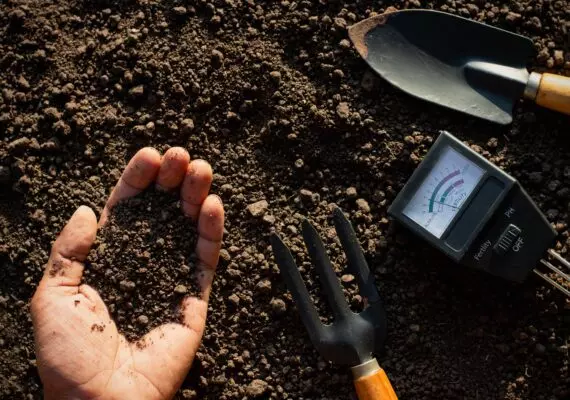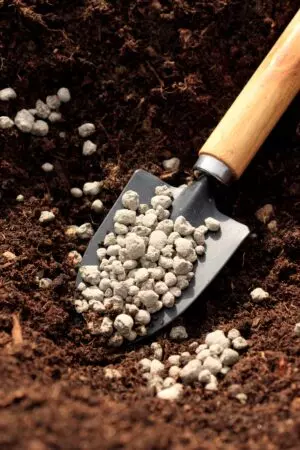
WHAT BONITATION CLASSES OF SOILS ARE DISTINGUISHED IN POLAND?
Bonitation classes divide soils based on their quality, location, profile structure, pH, and composition. There are nine classes of soil in arable lands. These are I, II, IIIa, IIIb, IVa, IVb, V, VI, and VIRz.
Class I represents the best arable soils. They are classified as very good wheat complexes. Characterized by high nutrient content, they are easy to cultivate and warm. They have good permeability and drainage, as well as a deep humus layer. They usually do not exhibit high acidity. They can be found in plains such as the Lublin Upland near Chełm, the Lesser Poland Upland near Kraków, the Głubczyce Plateau, the Vistula Delta, the Vistula Spit, Kujawy, the Greater Poland Lowland, Silesia, the Szczecin Lowland, as well as in the vicinity of Ciechanów and Łowicz.
Class II represents very good arable soils. Class II soils are very similar to Class I, but located in less favorable terrain, they have poorer permeability and aeration. Therefore, they are more difficult to cultivate and yield slightly lower crops than Class I soils.
Class III distinguishes two subclasses – a and b. Among them are good and moderately good arable soils. These soils occur in areas with poorer conditions, hence they have poorer physical properties, such as fluctuating groundwater levels. Sometimes, Class III soils are too wet or too dry.
In Class IVa and b, moderate arable soils are found. They are characterized primarily by high variability. Cultivating them requires significant skills to perform all agrotechnical and agrochemical operations at the optimal time for the given soil. In Class IV, heavy soils contain large amounts of nutrients. Unfortunately, they are difficult to cultivate due to their poor permeability and coldness. In the heat, they tend to dry out and crack. Melioration of these soils is usually necessary due to the high groundwater level. If favorable weather conditions persist and the soil is properly cultivated, good yields can be obtained, e.g., sugar beets or wheat. However, crop cultivation and yields are highly dependent on the amount of rainfall in a given year.
Class V comprises weak arable soils. They are characterized by low fertility, poor productivity, dryness, and lightness. They are not very rich in organic matter. Rye and yellow lupine can be grown on them. However, when the year is abundant in precipitation, potatoes and serradella can be grown.
Class VI contains the weakest arable soils. They are considered defective, unreliable, uncertain, and low-yielding soils. Soils in this class are too dry and loose. Only lupine can be successfully cultivated on them. If weather conditions are favorable in a given year, average yields of rye can be obtained from them. The soil in this class also includes stony, shallow, and excessively wet soils with consistently high groundwater levels. Meliorating such soils is extremely difficult, sometimes even impossible.
Class VIRz represents soils designated for afforestation. They have a poorly marked humus layer, are poor in nutrients, and are very dry. They are not suitable for field cultivation.
WHAT IS THE DIVISION OF SOIL BASED ON AGRONOMIC CATEGORIES?
Various types of soils are distinguished in Poland. They can also be divided based on agronomic categories. Among them are:
- Light soils;
- Medium soils;
- Heavy soils.
Light soils have a sandy character and predominate in Poland. They are dry and poorly retain water in the substrate. They do not have many nutrients. They are suitable for growing plants with deep roots. Other species planted on them require irrigation. To improve the quality of light soils, fertilization is necessary, e.g., with manure.
Medium soils are suitable for growing most crops. They contain a lot of humus – from 1% to 2.5% – retain water well, and provide plants with adequate air access. If properly cared for, they can yield high crops.
Heavy soils are characterized by low oxygen levels and excessive water absorption. As a result, they are not very suitable for growing crops. To become suitable, they require many agrotechnical and meliorative treatments.
LIMING THE SOIL
Liming soils in Poland is a necessary procedure due to the high acidity of most soils. If the soil has the wrong pH, it is very difficult for plants to grow and develop properly. They do not produce expected yields and become more susceptible to diseases (especially fungal ones). Acidic soils in Poland are the result of natural processes of calcium leaching from the soil, caused by atmospheric precipitation, as well as overly expansive and aggressive human activity.
Therefore, it is necessary to improve the soil quality by liming. It is best to do this in autumn, after harvesting in the field or early spring, at least a month before planting or sowing crops. Granulated magnesium lime can be used for this purpose. Not only will it neutralize the soil, but it will also enrich it with calcium and magnesium. In situations where the soil pH deviates significantly from the optimal level for a given crop, the best solution is to use powdered lime, e.g., Kujawit or Radkowit (for acidic soils with low magnesium.

Dlatego niezbędne jest poprawienie jakości gleby poprzez wykonanie zabiegu wapnowania. Najlepiej jest go przeprowadzić jesienią, już po zakończeniu zbiorów na polu lub wczesną wiosną, minimum na miesiąc przed rozpoczęciem sadzenia roślin lub ich siewu. Można do tego celu wykorzystać np. wapno magnezowe granulowane. Nie tylko pozwoli ono odkwasić glebę, lecz także wzbogaci ją w wapń i magnez. W sytuacji, gdy odczyn gleby bardzo mocno odbiega od optymalnego dla danej uprawy, najlepszym rozwiązaniem będzie zastosowanie wapna w formie sypkiej, np. Kujawit lub Radkowit (w przypadku gleb kwaśnych, które mają niską zawartość magnezu). Jeśli odczyn gleby nie odbiega mocno od odczynu optymalnego, można zastosować wapna granulowane, np. Polcalc III Generacji lub SuperMag (w przypadku gleb kwaśnych, które mają niską zawartość magnezu). Termin wapnowania uzależniony jest od kondycji gleby wynikającej z jej analizy (odczyn pH) i gatunku roślin, które mają być uprawiane na polu.
W pierwszej kolejności, przed wapnowaniem, należy przebadać w laboratorium próbkę ziemi. Dzięki temu określi się, jakie jest dokładne pH gleby i jej zasobność w składniki odżywcze. Na podstawie wyników można dobrać odpowiednie produkty do nawożenia i wapnowania, a także prawidłową dawkę nawozu. Zabieg wapnowania najlepiej przeprowadzić w suchy i bezwietrzny dzień. Pozwoli to na ograniczenie strat wapna, które wynikają z pylenia. Wapno należy wymieszać równomiernie z ziemią. Trzeba pamiętać o tym, by zachować odstęp pomiędzy wapnowaniem gleby a stosowaniem różnych nawozów, m.in. azotowych, fosforowych czy siarkowych.
Dobre efekty w odkwaszaniu gleby przynosi jej wapnowanie za pomocą wapna węglanowego, np. wapna węglanowego granulowanego POLCALC III Generacji lub wapna magnezowego granulowanego SuperMag. Nie jest ono agresywne – stopniowo uwalnia się w glebie i skutecznie przywraca jej prawidłowe pH. Dla utrzymania efektu odkwaszenia gleby można zastosować także wapno dolomitowe, które działa bardzo wolno (przynosi efekty w ciągu kilku lat).






